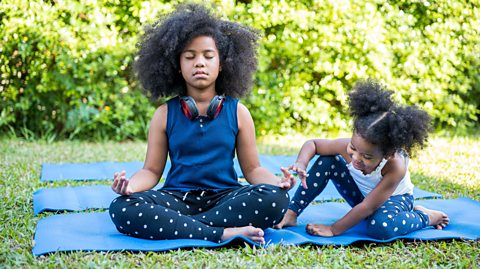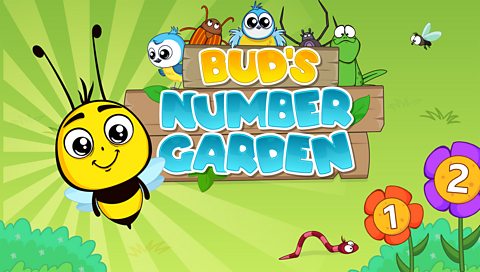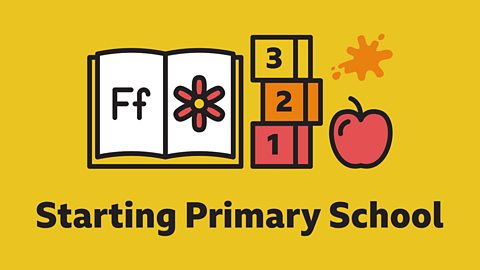The term ‘mindfulness’ may conjure up images of trying to sit still and quietly meditate, this could be described as ‘formal meditation’. However, there are also ways mindfulness can be brought into everyday life with a more ‘informal practice’.
The essence of mindfulness is to bring the mind into ‘the present moment’ and notice what is going on around us – both internally and externally. Our minds can wander often, so it can be really beneficial to practise bringing your mind to the present moment. One way we can try this is by exploring different activities. It can help us to be really present in our day, not getting caught up in the past or worrying about the future.
It’s really normal for your mind to wander to other things when we try these activities. The important part is to gently and kindly bring your mind back to the present moment. The more you practise, the easier it will become. The top tips below are perfect for children and adults alike. Why not have a go together?
1. Yoga and tai chi
 Image source, Getty Images
Image source, Getty ImagesIt’s been proven that exercise can help us feel mentally refreshed. Moving the body can be a perfect way of bringing the mind into the present. The gentle movements in tai chi and yoga require particular special care. Why not encourage your child to have a go at poses like ‘tree pose’? Focusing on a spot in front of them will help them to balance, and the concentration required will likely leave little time to think of other things except balancing the body. Both tai chi and yoga incorporate a focus on the breath, which is a key anchor to the present moment; notice the way the breath enters and leaves the body and which parts of the body expand as you breathe.
You could follow an online tutorial or book at home. Focus on any moves that your child finds particularly tricky and note how you both progress over time. Why not dedicate ten minutes each day to your practice? If you practise at the same time each day, it will be easier to make it part of your routine.
The concept of mindfulness can also apply to other forms of exercise.
2. Gardening
 Image source, GETTY IMAGES
Image source, GETTY IMAGESSpending time in nature is one of the best ways of appreciating the world around us. Whilst it might not be possible at the moment, green fingers can also get to work indoors. Why not tend or set up an indoor herb garden? Or, if you have any indoor plants, check to see if they need repotting (the roots may have become matted at the bottom of the pot, which shows that the plant is straining for more space). Children can also help to water plants.
Alternatively, why not pick flowers or ferns from the garden, if you have one? Make use of any leaves or flowers you have picked by either prepping them to go in a vase or pressing them – put them between two pieces of plain paper and sandwich between two big books and leave for a few days. Encourage your child to notice the colours and textures of each flower and stem as you prepare them. What can you notice about these plants and flowers that you may have never seen before?
3. Card making
 Image source, GETTY IMAGES
Image source, GETTY IMAGESGetting creative is a perfect mindful activity. You may have heard of mindful colouring, but why not take it one step further and create something of your own from scratch? You could turn the pressed flowers mentioned above into homemade cards or even a picture for the wall, taking special care to place them without spoiling them. Adding some stencilling to your card can really embellish a look, and also requires concentration and care – a very mindful activity.
Alternatively, why not try and paint a landscape? Encourage your child to find a picture they like or a landscape in a magazine – can they recreate the colours and lighting with some child’s paints? Once you have the finished result, put it somewhere where you can appreciate it every day.
The challenge here is not to get too focused on the end result, but rather to bring your mind to noticing the process of creating something.
4. Mindful walking
 Image source, GETTY IMAGES
Image source, GETTY IMAGESIf you are able to get out for a walk once a day - rather than simply going from A to B, there are lots of ways to make it interesting and focus the mind on everything around you – an essential part of mindfulness.
Why not encourage your child to pick a particular type of wildlife and see how many you spot as you walk – e.g. how many birds can you see or hear? How many things can you see that are brown? You may have heard that a good way to help feel calmer if you ever feel anxious can be to acknowledge five things you can see around you, four things you can touch, three things you can hear, two you can smell and one you can taste – this same concept can be used on any day to bring your child’s attention to the present moment.
5. Doing a jigsaw
 Image source, GETTY IMAGES
Image source, GETTY IMAGESDoing a jigsaw is just one of many activities you could do at home whilst bringing about an element of mindfulness. Is there time to focus on anything but the present when you are on the hunt for a missing corner piece?
It is also an activity that doesn’t require the use of any screens or devices. So, why not put devices away, or switch off notifications to avoid distraction and encourage the whole family to take part? Other similarly mindful activities you could try include solving a crossword, word search, 3D puzzle or playing a card game, all of which you can do with your child too.
For further information check out the rest of Starting Primary School which has lots of ways to help prepare children for different aspects of school life – both practically and emotionally.
Parents' Toolkit
Fun activities, real-life stories, wellbeing support and loads of helpful advice - we're here for you and your child.

Bud's Number Garden
Join Bud the bee, explore his magical garden and practise recognising numbers, counting, sequencing and much more!

More Starting Primary School videos and articles
Head to our homepage to help you and your child prepare for starting primary school and thrive in school life.
